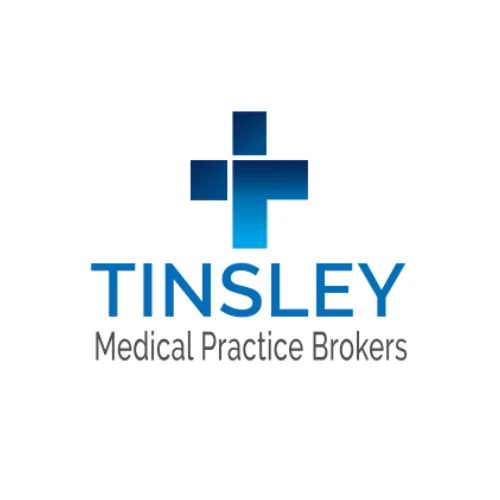Buying a primary care practice for sale can be one of the most rewarding and strategic moves for physicians and healthcare entrepreneurs. It provides the opportunity to bypass the startup challenges of building a practice from scratch and step directly into an established patient base, revenue stream, and operational infrastructure. However, financing the acquisition is often the most significant hurdle. Understanding your financing options can help streamline the buying process and ensure long-term success.
In this article, we will explore various financing routes available to buyers, from traditional loans to alternative funding strategies. Whether you're a first-time buyer or a seasoned practitioner, these insights will guide you in making informed financial decisions during the purchase of a primary care practice.
1. Traditional Bank Loans
The most common and often the most straightforward financing option is a traditional term loan from a bank. Banks generally offer favorable interest rates, especially when the buyer has a good credit score, a solid business plan, and relevant medical experience.
Pros:
- Competitive interest rates
- Fixed repayment schedules
- Familiar lending process
Cons:
- Requires strong credit and collateral
- Involves detailed underwriting and due diligence
- May have a longer approval process
If you're considering this route, it's crucial to prepare a detailed acquisition plan, including a projected profit and loss statement and a summary of the practice’s financial history.
2. SBA (Small Business Administration) Loans
SBA loans are a popular choice for healthcare professionals due to their flexible terms and lower down payment requirements. The SBA 7(a) loan is particularly well-suited for acquiring a primary care practice.
Pros:
- Lower down payments (typically 10%–15%)
- Longer repayment terms (up to 10 years)
- Competitive interest rates
Cons:
- Application process can be extensive
- SBA approval can be time-consuming
- May require personal guarantees
Buyers must ensure that the primary care practice for sale meets SBA eligibility standards, which include profitability, reasonable purchase price, and legitimate business operations.
3. Seller Financing
In some cases, the seller may offer to finance a portion of the purchase price. This option can be ideal for buyers who lack access to full bank funding or want to reduce upfront costs.
Pros:
- Flexible terms negotiated directly with the seller
- Faster closing process
- Builds trust between buyer and seller
Cons:
- May involve higher interest rates
- Seller assumes risk of buyer default
- Usually covers only a part of the total purchase price
Seller financing works best when combined with another financing method, such as a partial bank loan.
4. Alternative Lenders and Online Financing
A growing number of alternative lenders and fintech platforms offer medical practice acquisition loans. These loans are typically faster to acquire than traditional ones and may have fewer documentation requirements.
Pros:
- Fast approval times
- Minimal paperwork
- Flexible terms
Cons:
- Higher interest rates
- Shorter repayment windows
- Less regulation than banks
These lenders are best suited for buyers with immediate cash flow needs or when conventional financing options fall through.
5. Partnerships and Joint Ventures
For those looking to reduce financial risk or capital outlay, entering into a partnership can be an effective financing strategy. You can partner with another physician or investor to jointly acquire and operate the practice.
Pros:
- Shared financial burden
- Diverse management experience
- Broader investment base
Cons:
- Profit sharing
- Potential for conflicts in decision-making
- Need for clear legal agreements
This method is especially useful in competitive markets where healthcare practices command higher valuations.
6. Personal Savings and Retirement Funds
While not suitable for all, some buyers choose to fund their purchase using personal savings or retirement accounts (such as a ROBS – Rollover for Business Startups). Though risky, this option provides complete ownership without interest payments or third-party involvement.
Pros:
- No debt incurred
- Full control of the practice
- Fast transaction process
Cons:
- High personal financial risk
- Potential tax implications
- No leverage or outside validation
Use this option only if you are financially stable and have conducted thorough due diligence.
7. Utilizing a Strategic Investment Plan
Many successful buyers incorporate Medical Practice Acquisition Strategies that involve a combination of financing methods. For instance, using an SBA loan to cover 80% of the purchase, seller financing for 10%, and personal capital for the remaining 10% can create a balanced and manageable structure.
This approach also ties into Healthcare Practice Valuation, where the practice's price is determined by assessing earnings, patient volume, operational costs, and market position. Accurately valuing a practice ensures you're not overpaying and gives lenders confidence in your business plan.
Additionally, understanding Selling a Medical Practice from the seller’s point of view can give you an edge in negotiations. A seller who has a clear transition plan and realistic price expectations is more likely to be open to creative financing terms.
Final Thoughts
Buying a primary care practice is a significant investment, but the right financing can make the process smoother and more profitable in the long run. From traditional loans and SBA options to seller financing and strategic partnerships, each funding method has its own benefits and considerations.
It’s essential to assess your financial situation, long-term goals, and the specifics of the practice you’re purchasing before choosing a financing option. Collaborating with experienced medical practice brokers, legal advisors, and financial consultants can also help you navigate complex deal structures and secure the best outcome.
Ultimately, the key to success lies in preparation, flexibility, and informed decision-making—backed by a financing solution that aligns with your vision for the practice.


